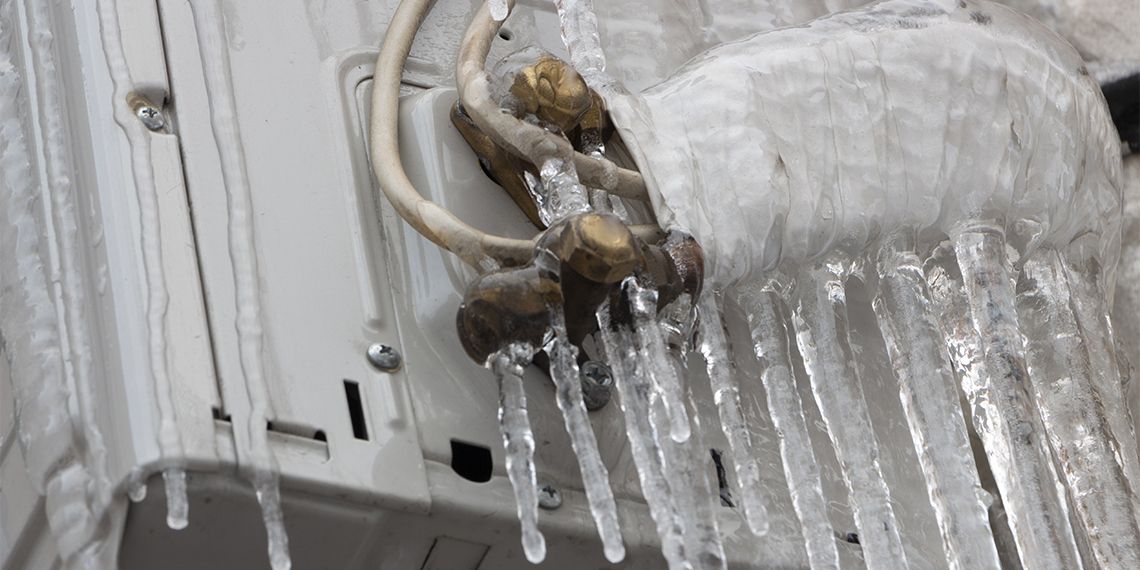How to Handle a Frozen AC Pipe: Complete Manual
How to Handle a Frozen AC Pipe: Complete Manual
Blog Article
Right here in the next paragraph you can discover a good deal of reliable facts relating to Have a Frozen AC Line? Here’s How to Fix It.

Intro
Uncovering that your air conditioning pipe is frozen can be worrying, especially throughout warm summertime when you count on your a/c one of the most. Comprehending what to do in such a circumstance is essential to stop further damage to your air conditioning system and ensure your comfort inside.
Understanding the Causes
Several elements can add to the cold of an AC pipe. Comprehending these reasons can aid you address the issue efficiently.
Lack of Airflow
One typical reason for a frozen air conditioning pipe is inadequate air flow. When the air flow over the evaporator coil is restricted, it can trigger the coil to drop below freezing temperature, causing ice formation on the pipeline.
Low Refrigerant Levels
Inadequate cooling agent levels in your a/c system can additionally result in an icy pipeline. Low cooling agent degrees can cause the pressure in the system to drop, causing the cold of moisture on the evaporator coil.
Cold Weather Conditions
In chillier environments, freezing temperature levels outside can add to the freezing of a/c pipelines. If your air conditioner device is not effectively protected or if there are leakages in the ductwork, cool air can penetrate the system, creating the pipe to freeze.
Dirty Air Filters
Dirty or blocked air filters can limit air flow in your air conditioner system, leading to different issues, consisting of a frozen pipeline. It's important to change or clean your air filterings system on a regular basis to make certain appropriate airflow and prevent ice accumulation.
Signs of a Frozen Air Conditioner Pipe
Acknowledging the signs of a frozen AC pipe is critical for prompt activity.
Decreased Airflow
If you see a considerable decline in airflow from your vents, it might show a frozen pipeline.
Ice Buildup on the Pipe
Noticeable ice buildup on the refrigerant line or the evaporator coil is a clear sign of an icy AC pipe.
Unusual Sounds from the Unit
Unusual noises, such as hissing or gurgling, coming from your air conditioning unit can indicate that there's ice present on the pipe.
Immediate Actions to Take
When faced with a frozen AC pipe, it's important to act promptly to stop more damage to your air conditioning system.
Turning off the a/c
The first step is to shut off your a/c unit to prevent the system from running and worsening the problem.
Checking for Blockages
Examine the location around the interior unit for any blockages that may be obstructing air flow, such as furniture or drapes.
Thawing the Pipe
You can use mild methods like positioning towels soaked in cozy water around the icy pipe to aid thaw it slowly.
Safety nets
Taking safety nets can help prevent future events of a frozen a/c pipeline.
When DIY Methods Fail
If your attempts to thaw the pipe or address various other concerns are unsuccessful, it's time to contact a specialist.
Importance of Hiring a Professional HVAC Technician
A certified HVAC service technician has the expertise and tools needed to identify and fix problems with your a/c system safely and successfully.
Routine Maintenance Checks
Arrange regular maintenance talk to an expert HVAC specialist to ensure that your AC system is running successfully.
Altering Air Filters
Routinely replace or clean your air filters to stop airflow constraints and keep ideal performance.
Protecting Exposed Pipes
If your air conditioning pipes are exposed to cold temperatures, think about protecting them to avoid freezing during cold weather.
Looking For Professional Help
If DIY methods fall short to solve the problem or if you're unsure concerning exactly how to continue, it's finest to seek assistance from a certified HVAC specialist.
Conclusion
Managing an icy a/c pipe can be an irritating experience, however recognizing exactly how to react can help decrease damages and recover comfort to your home. By understanding the reasons, recognizing the indications, and taking punctual action, you can properly deal with the problem and protect against future occurrences.
G UP? HOW TO FIX IT?
It happens all over America. And the rest of the world probably. It’s the hottest day ever and for some darn reason your AC isn’t cooling the house. You fiddle with the thermostat to try and fix the problem. Nada. All you can do now is go outside and check the AC unit. You make your way there and find your air conditioner unit is frozen! But how?
In this post we’ll cover how you can tell that your air conditioner has frozen (other than the obvious reasons), what could have caused the freeze, and some of the things you can do about your AC freezing up. And if you have a frozen heat pump condenser, read our blog about it to learn what to do! But remember, it is always best to avoid your AC freezing up with an AC tune up. And if you are moving into a home, it's critical to get HVAC inspection so that you are aware of an AC problems before you move in.
Keep reading and you may be able to fix the frozen AC yourself. If you can’t, call an HVAC specialist. If you live in Maryland, call SuperTech HVAC for AC repair. We’ll take care of it.
How Does An Air Conditioning Unit Work?
How you probably imagine an AC works is wrong. Contrary to popular belief, an AC system does not inject cool air into a building. Instead, it removes the heat from inside and transfers it outside. Cool huh? (Pun intended).There are 4 major components among the 3 stations of an air conditioning system: the evaporator coil, the compressor, the condenser, and the refrigerant – a special chemical that links everything together through a closed loop system.
Station 1:
Warm indoor air is sucked into the return vent, through a filter, and blows over the evaporator coil. The heat is absorbed into the cold refrigerant, turning it from liquid to gas. The air, which is now cool, is blown back into the home to areas that your thermostat, i.e. you, has decided.
Station 2:
The refrigerant makes its way outside the house to the compressor, which squeezes the warm refrigerant, raising its gaseous temperature even more.
Station 3:
When the super hot vapor refrigerant reaches the condenser, the last step, the heat is expelled and absorbed into the outdoor air. The refrigerant instantly cools, which changes it from gas back to liquid form. The cold liquid refrigerant is now ready to return to station 1 and repeat the process.
Is Your AC Freezing Up? Here Are The Signs:
As you may have guessed, your air conditioner unit freezing up on a hot day is not normal.
If this happens, there's no need to panic. Often the issue can be solved with a little troubleshooting. If the AC unit is left frozen for too long however, you may find yourself with a bigger problem.
First things first, how do you know your AC is frozen?
Well, the obvious sign is the ice on your refrigerant line-set pipe. Simply check between your outdoor AC unit and your home's exterior wall to see whether your AC line frozen.
You might also have a frozen evaporator coil. This one's not as easy to check. You'll need to open a panel on the indoor unit to inspect. Don't do this unless you're handy. If you aren't, call an HVAC pro like SuperTech HVAC or you may damage something in the process.

Do you appreciate more info about How can I fix an air conditioner’s frozen pipe?? Post feedback directly below. We will be pleased to hear your suggestions about this post. We are looking forward that you come back again before long. If you enjoyed our blog entry please make sure you remember to pass it around. Thanks so much for your time invested reading it.
Click Here Report this page